Nokia 作者: 来源: 发布时间:2021-10-13
一、所属省或是州,具体位置,人口,面积
Nokia is a town and a municipality on the banks of the Nokianvirta River (Kokemäenjoki) in the region of Pirkanmaa, some 15 kilometres (9 mi) west of Tampere. As of 31 January 2019 it has a population of 33,539. Nokia is one of the largest municipalities of the provincial center after Tampere.Nokia is an industrial city and the starting point for some Finnish brands, the most famous of which are the former conglomerate and the current telecommunications company Nokia and the clothing manufacturer Nanso.
Nokia's city center does not form its own city, but is part of the Tampere city center, which, in addition to Nokia, extends to several Tampere suburbs.
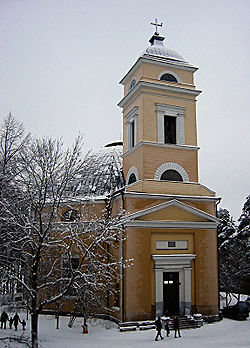
二、自然地理
1.地理条件
There is a town named Nokia in Finland! The very roots of the famous Nokia Corporation lie on the Nokia River where the paper mill of Mr. Idestam started almost 140 years ago. He gave the company the name "Nokia" which was name of a manor nearby.
Nokia's landscape is dominated by Pyhäjärvi, Nokianvirta and Kulovesi. Pyhäjärvi is the central lake in the Kokemäenjoki watershed, where the waters of the Vanajavesi route join to the south and the Näsijärvi route to the north. Pyhäjärvi flows down the Nokianvirta, which flows in a deep gorge valley, into Kulovesi, where the waters of the Ikaalinen route from the northwest flow down to Siuronkoski. At the western border, Kulovesi also receives the water body coming from the direction of Lake Mouhijärvi in the Leukaluiden Strait and on the southern shore to the bottom of Sarkolanlahti, the Lanajoki River, which originates from the lakes in the western part of Vesilahti. The smaller lakes in the Nokia area are Vihnusjärvi, Kalliojärvi, Ylinenjärvi and Alinenjärvi to the north of the Nokianvirta and Lake Teernijärvi to the south.
The surface area of the Nokia area is very variable and the elevation differences in the terrain are quite large in many places. The highest terrain in the city is on the cliff north of Lake Ruokejärvi (188 m above sea level). Until the 1970s, Kivipyykkivuori (163 m above sea level), located south of Kulovesi, was the confluence of the borders of Nokia, Suoniemi and Tottijärvi. The farmlands in the central and western parts of the city are concentrated in a narrow strip of water on the banks of the water. Nokia is part of the core area of the Pirkkala grove center, but with the settlement, the groves have largely disappeared. Nokianvirta shoreline conditions were largely destroyed due to rising water levels. The remaining deciduous forests grow, among other things, elm and walnut shrubs.
2. 交通情况
Not only jobs but the surrounding nature with lakes, rivers and country side attract inhabitants to Nokia. For most people coming to town, tourism means enjoying the variety of quality outdoor activities on offer. For boaters, Nokia is the centre of magnificent landscapes and routes. Cruises will take you across lake Pyhäjärvi to city of Tampere, to the historical town of Hämeenlinna or along Lake Kulovesi to the small town of Vammala.
Nokia has good road and air connections thanks to the neighboring city of Tampere. The railway between Tampere and Pori and highways 11 and 12 run through the city. The latter has one of the steepest rises in the Finnish main road network in Sarkola. Highway 3 also crosses Nokia's eastern border. Since 2002, after a ten-year hiatus, trains to Pori have also stopped at Nokia. Nokia Train Station is one of the original traffic locations on the Pori line. Tampere-Pirkkala Airport is only less than ten kilometers from the center of Nokia.
Travel time from Nokia to Tampere is 14 minutes by train and 20 minutes by bus. The journey between Nokia and Pori takes at most an hour and 15 minutes by train and an hour and 10 minutes by bus. The fastest travel time between Nokia and Helsinki is one hour and 49 minutes by train and 2 hours and 45 minutes by bus.
All Nokia train connections outside the Tampere-Pori line require a train change in Tampere. There are direct high-speed buses from Nokia to Tampere, Pori, Helsinki, Rauma and Turku. Travel time between Nokia and Turku takes a maximum of 2 hours and 10 minutes by bus and 2 hours and 14 minutes by train.
三、经济发展和规模
In 2019, the population of Nokia was 15,922 persons and the tax rate was 7.7%. The decline of Nokia, which at its height accounted for 4% of Finland's GDP and more than 20% of its exports (pdf), is one factor in Finland's malaise. Much of this disparity has, however, been due to the economic dominance of Nokia, Finland's largest company and Finland's only major multinational. Nokia supported and greatly benefited from the euro and the European single market, particularly from a common European digital mobile phone standard (GSM), but it failed to adapt when the market shifted to mobile computing.
四、产业特点重点项目
The eponymous telecommunications giant Nokia was founded by Fredrik Idestam in 1865 as a pulp mill. The Finnish Rubber Works Ltd (Suomen Gummitehdas Oy) (founded 1898) set up a factory in Nokia in 1904. These two companies and the Cable Company Ltd (Kaapelitehdas Oy) amalgamated in 1967 forming Nokia Corporation. Different branches of this conglomerate were split into several companies or sold off around 1990. The rubber works still operates in Nokia as Nokian Tyres and the paper mill as Essity.
The telecommunication company Nokia no longer has any operations in the city of Nokia. Despite the company having been founded in Nokia, the headquarters were moved to Espoo, and the main factories are in Salo, both nearly 200 kilometres south of Nokia. The only current presence of the company in the city is the Nokia mansion, which is sometimes used for private parties for the company's executive staff. The city has repeatedly been asked to commemorate the company it gave birth to, but it has always declined, on the grounds that mobile phones were never produced there. Nokia does have engineering and design facilities 15 kilometers away in nearby Tampere.
五、风景名胜,景点( attractions)
1. Pyhäjärvi
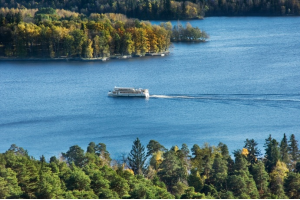
Pyhäjärvi is a lake in southern Finland. Although the name means in modern Finnish "holy lake", it probably meant originally "border lake". Pyhäjärvi is shaped like the letter "C" with the cities of Tampere and Nokia on the northern end, and town of Lempäälä at the southern end. The lake is fed by the water running through the Tammerkoski rapids in the center of Tampere from the North, and by the waters from lake Vanajavesi in the South. Because of the Tammerkoski rapids, the water in Pyhäjärvi is warmer and richer in ozone than that in the northern lake, Näsijärvi, which results in the life in this lake being richer, even though the water is more polluted. There are a number of other Pyhäjärvis in Finland and its former territories, as well.
2. Ellivuori
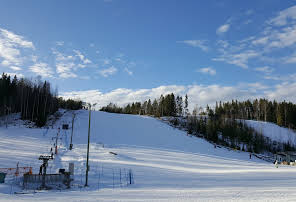
Ski resort, alpine skiing, and skiing
3. Pappilan nuotiopaikka
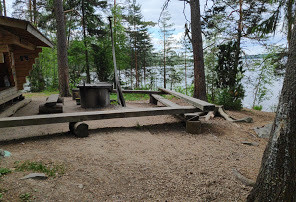
Pappila's outdoor areas invite the people of Pirkkala to go outdoors! Welcome to a refreshed area whose history as a rectory dates back to the early 17th century.
The Pappila main building, the people's house and the barn building are located in the Pappila area. From the parking lot on the left side of the yard, the road leads to the beach, where the church boat hut, the bird tower, the hut and a shelter and a campfire are a short distance away. There is another campfire site, a gazebo and a frisbee golf course in Pappila's yard.
Pappila is located at Pappilantie 65, Pirkkala. The road to Pappila runs next to the Old Church at Ania beach road 226.
六、历史文化
1.历史
The origin of the name Nokia is obscure. In modern Finnish, noki means soot and nokia is its inflected plural, although this form of the word is rarely if ever used. The most common theory claims the name actually originates from the archaic Finnish word nois (pl. nokia) or nokinäätä ("soot marten"), meaning sable. After sable was hunted to extinction in Finland, the word was applied to any dark-coated fur animal, such as the marten, which are found in the area to this day. The sable is enshrined on the Nokia coat of arms. However, later research has appeared to indicate that sables never inhabited Finland in the first place, and the name nois may actually refer to the beaver. The first literary reference to Nokia is in a 1505 document in connection with the Nokia Manor.
Nokia was the setting of one of the largest battles in the Club War, a 1596 peasant uprising against feudal lords. The peasants, armed with clubs, took up residence in Nokia Manor and won several skirmishes against the feudal cavalry, but were decisively defeated by Klaus Fleming on 1–2 January 1597. Thousands of clubmen were slain and their leader Jaakko Ilkka, who had fled, was captured a few weeks later and executed. The Club War was the last major peasant revolt in Finland, and it permanently consolidated the hold of the nation state. Much later, in the Finnish Civil War (1918), Nokia (along with neighboring Tampere) was a Socialist stronghold and saw some combat.
Nokia used to reach out to the current heart of Tampere, with the Pispala area a part of Nokia's Suur-Pirkkala area. Suur-Pirkkala was eventually split into Pohjois- and Eteläis-Pirkkala (Northern and Southern). In 1938 Pohjois-Pirkkala was renamed as Nokia and Southern Pirkkala restored its original Pirkkala name. Nokia was designated as a city in 1977.
2. 文化
In the 1980s, Nokia's pastry was a dumpling soup seasoned with pork meat and a berry bun mixed with blueberries or raspberries and talcum powder. Nokia has also developed Grill Food Hot Dog, which is eaten especially on International Hot Dog Day.
七、其他信息
Today's Nokia is famous for its spa, factory shops, waterways, and events. Nokia also enjoys good road and air connections. From a religious perspective, Nokia is best known for the charismatic Nokia Revival which began in 1990. Nokia is also known for its own fast food cuisine, Kuuma koira.
In 140 years the paper mill village has grown to a town of 30 000 inhabitants. Nokia is an industrial town: main branches are rubber (tires and footwear), paper, textile, flooring and metal. Both the location close to the regional city of Tampere and excellent road and air connections have given fine possibilities to the growth.
The word nois (plural nokiit, genitive nokia) has been claimed to mean sable fur, suggesting that Nokia was a key trading site where sable furs were the most valuable commodity. Recent research, however, has speculated that sable would not have belonged to the Finnish fauna, even in ancient times. Nokia would mean a beaver. On the other hand, it is thought to have originally meant black- or dark-fur animals, which would explain its connection to the soot word- in parable with the watershed designation ferret.The word nokia often appears in the name of water bodies, so it may have meant a nesting place for a fur animal.
Nokia is considered a working class city with traditionally high results for left parties. In the 2012 municipal council elections, the Social Democrats succeeded in replacing the conservative party as the strongest party. The Left Alliance puts the third strongest faction ahead of the basic Finns and the Greens. The center and the communists are represented by three deputies each. With 5.9%, the Communist Party achieved its best national result in Nokia in 2012. Another mandate is held by the Christian Democrats.
八、联系方式
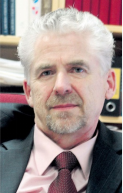
Mayor of Nokia: Markku Rahikkala
Address: Harjukatu 23, PL 2, 37101
Phone number: (03) 5652 0000
Website: https://www.nokiankaupunki.fi/
Email: kirjaamo@nokiankaupunki.fi
